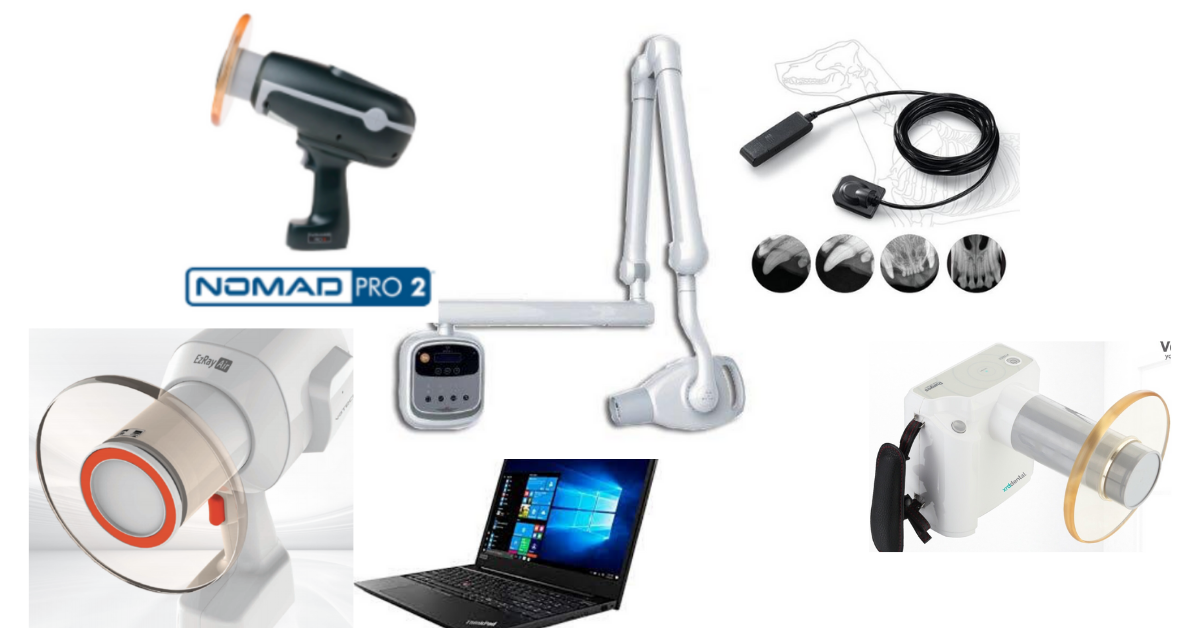How Much for a Veterinary Digital Dental X-Ray Systems Cost?
An average price range for a new digital dental radiography system would be $8,000-$15,000, depending on which components and features the system includes.
Dental radiographs are now considered a standard part of a comprehensive dental procedure.
Good quality dental x-rays can help a vet discover and treat more pathology, thereby boosting both patient care and revenue.
Although a dental x-ray system is an important equipment investment, a veterinary practice should plan for its purchase appropriately.
This includes knowing how much to budget long-term, exploring financing options, and maximizing the ROI on the new equipment.
It’s important to see exactly what you’re getting for the purchase price. For example, is the generator handheld, or is there a stand, arm, or wall mount included?
For CR plates or digital sensors, how many are included, and in which size(s)?
Also, what type of software are you receiving?
Don’t be afraid to shop around or negotiate with sellers, to receive the best possible price.
However, also keep in mind that the cheapest price isn’t always the best. Quality is key when investing in an important piece of equipment.
Check with colleagues to see which systems they prefer, or ask the seller for references of other vets in your area who have purchased the equipment so you can get some honest feedback.
See if neighboring clinics would mind you stopping by to see the equipment in person and look at the images they’re getting.
What Are the Maintenance Costs of Veterinary Digital Dental X-Ray Equipment?
In addition to the actual purchase price, it’s important to factor in the long-term costs of maintaining your equipment in working order.
Ongoing costs, for both new and used equipment alike, may include…
Warranties. Ask when any initial warranties expire, whether they can be renewed, and how much it will cost to renew. Also, find out exactly what the warranty covers. Ask about drop damage, bite damage (since the sensor will be placed directly in a patient’s mouth!), and any other common incidents that may occur in a veterinary hospital. Not all warranties cover these things.
Ongoing maintenance and repairs. Ask about routine recommended maintenance, as well as costs of the most common types of repairs. If any of this isn’t fully covered by a warranty or service plan, plan ahead for these costs so they don’t catch you by surprise. Also, add these expenses into your total purchase cost. Sometimes, more expensive long-term maintenance can cancel out the cost savings of a lower initial purchase price.
Software upgrades. Timely upgrades are crucial to keeping your equipment working smoothly—for image processing, storage, and sharing. Also, ask about security against hacking or cyber-attacks, since radiographs are part of confidential medical records.
Ask about technical support, and if there is a free 24/7 support line you can call for smaller issues.
Ask about loaner equipment that can be used if any component of your system needs to be repaired. With this option available, you’re less likely to lose revenue if your equipment becomes damaged or needs a repair.
Look Into Equipment Financing Options
Once you’ve calculated all the costs of purchasing and maintaining your new dental x-ray system, it’s also important to consider how you will finance the purchase. This can make or break your monthly cash flow.
The first decision is whether to purchase or rent the equipment. Many vets recommend purchasing if that is an option for your practice. However, each veterinary practice must choose what works best for their finances and practice flow.
Business savings may be a good option to purchase the equipment outright. But sometimes, monthly payment plans are easier on cash flow, since revenue from using the x-ray system could be enough to cover the monthly payment and earn a profit right away.
Of course, this is assuming that the interest rate on the payment plan is reasonable.
For monthly payment plans, check with the equipment seller, or ask about a capital lease (a type of loan for equipment purchases) from banks.
Remember to factor in tax savings (Section 179 of the IRS Tax Code) and seek guidance from a financial professional.
How Can a Veterinary Practice Maximize the Return on Their Equipment Investment?
Of course, you’re probably excited to start using your new dental x-ray equipment. However, maximizing the use of your equipment starts BEFORE the purchase.
If the equipment is confusing or cumbersome to use, it will take more time per study, which means fewer dental procedures can be scheduled. Also, there will be a subconscious reluctance to schedule if the equipment is a pain to use.
So, make sure to invest in a system that is user-friendly and efficient and produces high-quality, diagnostic images.
Also, invest in training for your team, since dental radiographs (especially those bisecting angle shots) can be confusing for anyone new to taking these x-ray studies. That also means training for vets on how to interpret dental images.
While a learning curve should always be expected, good training means less frustration and a shorter time until everyone feels comfortable getting great, diagnostic images—and for vets to feel confident diagnosing pathology on the images.
Finally, plan ahead for how much you will charge for dental x-ray studies, and how this can be worked into the total cost of a dental procedure.
All of these efforts can maximize the ROI on your new digital dental x-ray machine, while ensuring the highest level of patient care—a plan that’s beneficial to everyone.
Written by: Dr. Tammy Powell, DVM




